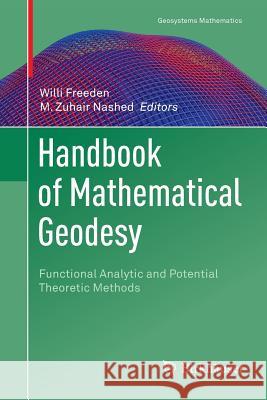Handbook of Mathematical Geodesy: Functional Analytic and Potential Theoretic Methods » książka
topmenu
Handbook of Mathematical Geodesy: Functional Analytic and Potential Theoretic Methods
ISBN-13: 9783030096229 / Angielski / Miękka / 2018 / 932 str.
Kategorie:
Kategorie BISAC:
Wydawca:
Birkhauser
Seria wydawnicza:
Język:
Angielski
ISBN-13:
9783030096229
Rok wydania:
2018
Wydanie:
Softcover Repri
Numer serii:
000779345
Ilość stron:
932
Waga:
1.29 kg
Wymiary:
23.39 x 15.6 x 4.75
Oprawa:
Miękka
Wolumenów:
01
Dodatkowe informacje:
Wydanie ilustrowane











